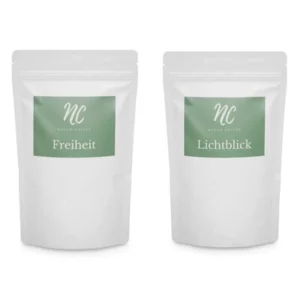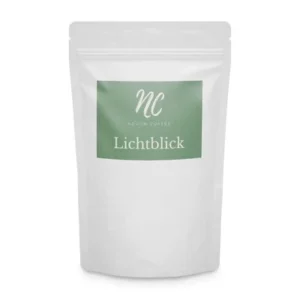This article is all about the popular beverage Café au Lait. We will explore its history, preparation, and differences from other coffee drinks. So sit back and grab a cup of your favorite coffee.
The History of Café au Lait
Café au Lait has a fascinating history closely linked to the development of coffee consumption. Originally from France, the drink became popular in the 17th century. The name translates to “coffee with milk” and aptly describes the main components of this beverage.
The tradition of Café au Lait originated in Parisian cafés, where it was considered an elegant and mild alternative to strong black coffee varieties. Adding milk made the coffee milder and creamier, appealing particularly to those who found the taste of pure coffee too intense and bitter.
Over time, Café au Lait has evolved into a globally loved beverage, with various cultures and regions adding their own twists. From spices like cinnamon or vanilla to the use of plant-based milk, the possibilities are endless.
Today, Café au Lait is not just a simple drink but a symbol of enjoyment, sociability, and coffee culture. Its history reflects the evolution of coffee consumption and illustrates how a simple beverage can become a global phenomenon.
Making Café au Lait at Home
Making Café au Lait at home is easier than you might think and allows you to enjoy this delicious coffee classic any time in the comfort of your own space. Here are some steps to create the perfect Café au Lait:
- Select coffee beans: Start with high-quality coffee beans that suit your taste. A medium roast works well for Café au Lait and provides a balanced flavor.
- Grind the coffee: Grind the coffee beans freshly just before brewing. A medium grind is ideal for preparing with a French Press. Nowadays, a double espresso is often used as well.
- Heat the milk: Choose your preferred milk or milk alternative and gently heat it in a pot until warm. Be careful not to boil the milk, as this can affect the flavor.
- Brew the coffee: Prepare your coffee by either making a double espresso or a strong coffee with the French Press.
- Create the mix: Pour the brewed coffee into a cup and top it up with the heated milk. Use a 1:1 ratio as in the original recipe or adjust it to your taste.
With these simple steps, you can easily make Café au Lait at home and enjoy this delightful beverage anytime.

The Right Ingredients for the Perfect Café au Lait
To prepare a truly delicious Café au Lait, selecting the right ingredients is key. Here are some tips to ensure your coffee turns out perfectly:
- High-quality coffee beans: Start with freshly roasted coffee beans of high quality. Choosing the right coffee variety significantly impacts the flavor. Select a variety that suits your taste and offers a pleasant balance of acidity, bitterness, and aromas.
- Fresh milk: Use fresh milk to achieve the best flavor. Whether cow’s milk, almond milk, oat milk, or another plant-based milk alternative – choose milk that suits your preferences and dietary needs. Ensure the milk is not stored for too long to maintain optimal freshness.
- Correct milk temperature: The temperature of the milk plays a crucial role in its texture and flavor. Heat the milk gently to about 60-70°C to reach a pleasant warmth without overheating or burning it. Overheated milk can negatively affect the coffee’s taste.
- Ratio of coffee to milk: The right ratio of coffee to milk is vital for balance and flavor. Experiment with different ratios to find the perfect mix for you. A ratio of approximately 1:1 reflects the original recipe and is a good starting point that you can adjust as needed.
- Optional flavors: If you’d like to add an extra touch to your coffee, you can incorporate various flavors such as vanilla, cinnamon, chocolate, or caramel. Experiment with different flavors and discover which ones suit your taste best.
A Popular Choice in Cafés and Restaurants
Café au Lait is not only a popular drink to make at home but also a common order in many cafés and restaurants worldwide. Here are some reasons why it is such a popular choice:
- Versatility: Café au Lait is an extremely versatile drink that can be enjoyed at any time of the day. Whether it’s for breakfast, as is common in France, or during an afternoon break – it always fits.
- Taste: The mild and creamy taste makes it a pleasant alternative for those who do not enjoy the strong flavor of black coffee. The combination of coffee and milk provides a balanced taste experience that appeals to many people.
- Caffeine Content: For coffee lovers who do not want to give up caffeine, it offers the perfect balance. Adding milk slightly reduces the caffeine content per 100 ml of coffee, making it a suitable choice for those who prefer moderate caffeine consumption.
- Social Aspect: Café au Lait is often enjoyed in social settings, whether meeting friends at a café or during a cozy brunch at home. The drink invites relaxation, conversation, and enjoying shared moments.
The Cultural Significance Worldwide
Café au Lait holds not only culinary importance but also plays a significant role in various cultures around the world. Here are some interesting aspects that highlight its cultural significance:
- France: In its country of origin, France, it is a staple of café culture. It is often enjoyed at breakfast or during an afternoon break and is a symbol of indulgence and relaxation. Interestingly, it is traditionally served in a bowl – without a handle.
- Italy: While espresso is the dominant coffee type in Italy, Café au Lait is also enjoyed here, especially in the northern regions. However, a double espresso is often used, making it known as Caffè Latte.
- USA: In the United States, Café au Lait has developed its own cultural significance, especially in cities like New Orleans, where it is traditionally made with strong chicory coffee. It is an essential part of the famous “Café au Lait and Beignets” pairing. Interestingly, the US also celebrates National Café au Lait Day.
Café au Lait vs. Caffè Latte vs. Milchkaffee vs. Cappuccino
All these terms refer to coffee with milk. But are there differences, or do all the terms describe the same drink?
Difference Between Café au Lait and Caffè Latte
Although both drinks sound similar and combine coffee with milk, there are some differences in their preparation and taste. While Café au Lait is traditionally made with equal parts coffee and hot milk and often prepared with filter coffee, Caffè Latte is usually made with a double espresso, hot milk, and some milk foam. As a result, Caffè Latte has a more intense coffee flavor and a creamier texture.
Difference Between Café au Lait and Milchkaffee
Both drinks contain coffee and milk but sometimes differ in preparation. The classic German Milchkaffee often includes some milk foam, whereas Café au Lait only uses heated milk.
Difference Between Café au Lait and Cappuccino
While Café au Lait is a mixture of filter coffee and milk in equal parts, the Cappuccino is characterized by its specific layering of espresso, hot milk, and milk foam. Unlike Café au Lait, which has a mild and creamy taste, the Cappuccino offers a more intense coffee experience with a balanced ratio of espresso, milk, and foam.
-
 Probierpaket Espressobohnen (Honduras + Brasilien)33,48€ inkl. MwSt.Includes 7% Umsatzsteuer (7,0%)(33,48€ / 1 kg)plus shipping
Probierpaket Espressobohnen (Honduras + Brasilien)33,48€ inkl. MwSt.Includes 7% Umsatzsteuer (7,0%)(33,48€ / 1 kg)plus shipping -
 Lichtblick Espressobohnen (Brasilien)10,49€ – 16,49€ inkl. MwSt.Includes 7% Umsatzsteuer (7,0%)plus shipping
Lichtblick Espressobohnen (Brasilien)10,49€ – 16,49€ inkl. MwSt.Includes 7% Umsatzsteuer (7,0%)plus shipping -
 Freiheit Espressobohnen (Honduras)10,99€ – 16,99€ inkl. MwSt.Includes 7% Umsatzsteuer (7,0%)plus shipping
Freiheit Espressobohnen (Honduras)10,99€ – 16,99€ inkl. MwSt.Includes 7% Umsatzsteuer (7,0%)plus shipping
Tips for Choosing the Best Coffee
Choosing the right coffee is crucial for the quality and taste of your Café au Lait. Here are some tips to help you find the best coffee for your favorite drink:
- Type of Coffee: Select a coffee variety that suits your taste and pairs well with milk. A medium roast is often a good choice for this coffee as it provides a balanced flavor and pleasant acidity.
- Freshness: Ensure you buy freshly roasted coffee to preserve its full aroma and freshness. Avoid coffee that has been sitting on shelves for a long time, as it may lose its flavor and quality.
- Grind Size: Grind the coffee freshly just before preparation to achieve an optimal flavor experience. The grind size should be adjusted according to the preparation method – finer for espresso, coarser for French Press.
- Origin: Learn about the origin of the coffee and choose sustainable coffee whenever possible.
- Experiment: Try different coffee varieties and blends to discover your personal favorite. Various coffees have distinct flavors and nuances that can impact the taste of your beverage.
